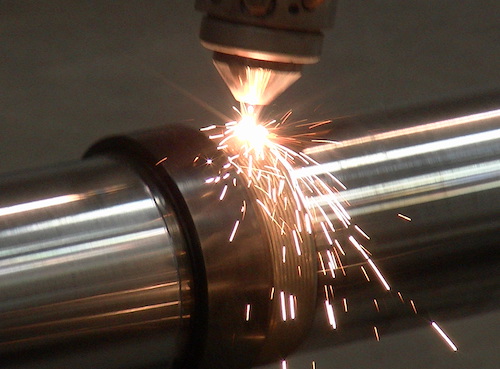Hard Facing & Cladding
Hard facing and cladding are two related processes used to improve the surface properties of components by applying a layer of hard material. While they share similarities, they have distinct applications and techniques:
-
Hard Facing:
- Definition: Hard facing, also known as hard surfacing or hardfacing, involves applying a layer of hard material onto a substrate surface to improve its resistance to wear, abrasion, erosion, and other forms of mechanical damage.
- Techniques: Hard facing can be achieved through various methods, including welding, thermal spraying (such as HVOF, plasma spray, or arc spray), and overlay welding using specialized electrodes or wires.
- Materials: The hard facing material can be composed of various alloys, carbides, ceramics, or composite materials selected based on the specific wear conditions and requirements of the application.
- Applications: Hard facing is commonly used in industries such as mining, construction, agriculture, manufacturing, and oil and gas, where components are subjected to severe wear and abrasion. Examples include excavator buckets, bulldozer blades, conveyor screws, and crusher hammers.
-
Cladding:
- Definition: Cladding involves applying a layer of one material (the cladding material) onto the surface of another material (the substrate) to enhance its properties or provide additional functionalities.
- Techniques: Cladding can be achieved through various processes, including welding (such as submerged arc welding or gas metal arc welding), thermal spraying, explosion bonding, laser cladding, and diffusion bonding.
- Materials: The cladding material is typically chosen for its corrosion resistance, thermal conductivity, or other specific properties required for the application. Common cladding materials include stainless steel, nickel alloys, titanium, and aluminum.
- Applications: Cladding is widely used in industries such as aerospace, automotive, marine, chemical processing, and power generation. It is applied to components such as pipes, valves, heat exchangers, pressure vessels, and turbine blades to improve corrosion resistance, thermal performance, or surface hardness.

